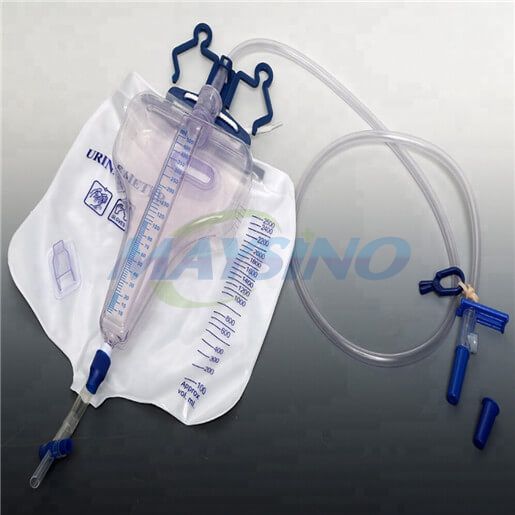Unveiling the Building Blocks: Materials Used in Luxury Urinary Drainage Bags
2024-03-16
In the realm of medical devices, luxury urinary drainage bags represent a pinnacle of innovation and comfort, offering patients a superior solution for managing urinary catheterization. Central to the design and construction of these advanced devices are the materials chosen for their durability, performance, and patient comfort. Let's explore the common materials used in the construction of luxury urinary drainage bags and how they impact the durability and performance of these essential medical devices.
1. PVC (Polyvinyl Chloride):
1. Durability: PVC is a versatile and durable thermoplastic polymer commonly used in the construction of urinary drainage bags. Its inherent strength and resilience make it well-suited for withstanding the rigors of daily use and handling.
2. Flexibility: PVC can be formulated to exhibit varying degrees of flexibility, allowing for the construction of drainage bags with soft, pliable components that conform to the contours of the body for enhanced comfort.
2. Silicone:
1. Biocompatibility: Silicone is prized for its exceptional biocompatibility, making it an ideal choice for medical applications such as urinary drainage bags. It is non-toxic, hypoallergenic, and resistant to microbial growth, reducing the risk of adverse reactions or infections.
2. Softness: Silicone exhibits a soft, smooth texture that is gentle against the skin, enhancing patient comfort during prolonged wear. Its flexibility allows for the construction of drainage bag components that are comfortable to wear and conform to the body's movements.
3. Polyurethane:
1. Strength and Durability: Polyurethane is valued for its high strength-to-weight ratio and exceptional durability, making it suitable for demanding medical applications. Urinary drainage bags constructed from polyurethane are resistant to punctures, tears, and abrasion, ensuring long-term reliability and performance.
2. Flexibility: Polyurethane can be engineered to exhibit excellent flexibility and elasticity, allowing for the construction of drainage bag components that are comfortable to wear and move with the body without restricting mobility.
4. Medical-Grade Adhesives:
1. Bonding Strength: Medical-grade adhesives are used to bond various components of urinary drainage bags, ensuring a secure and leak-proof seal. These adhesives offer superior bonding strength and chemical resistance, preventing delamination and ensuring the integrity of the bag over time.
5. Textile Straps and Fasteners:
1. Comfort: Textile materials such as nylon or polyester are commonly used for straps and fasteners on urinary drainage bags. These materials offer a balance of strength, durability, and comfort, ensuring a secure and comfortable fit for patients without causing irritation or discomfort.
2. Adjustability: Textile straps and fasteners are often adjustable, allowing patients to customize the fit of the drainage bag for optimal comfort and security. This adjustability accommodates variations in body size and shape, ensuring a snug and secure fit for every patient.
Conclusion:
In conclusion, the materials used in the construction of luxury urinary drainage bags are carefully selected to optimize durability, performance, and patient comfort. From PVC and silicone to polyurethane and medical-grade adhesives, each material contributes unique properties that enhance the functionality and reliability of these essential medical devices. By leveraging advanced materials and manufacturing techniques, luxury urinary drainage bags provide patients with a superior solution for managing urinary catheterization, promoting comfort, confidence, and quality of life during medical treatment and recovery.



